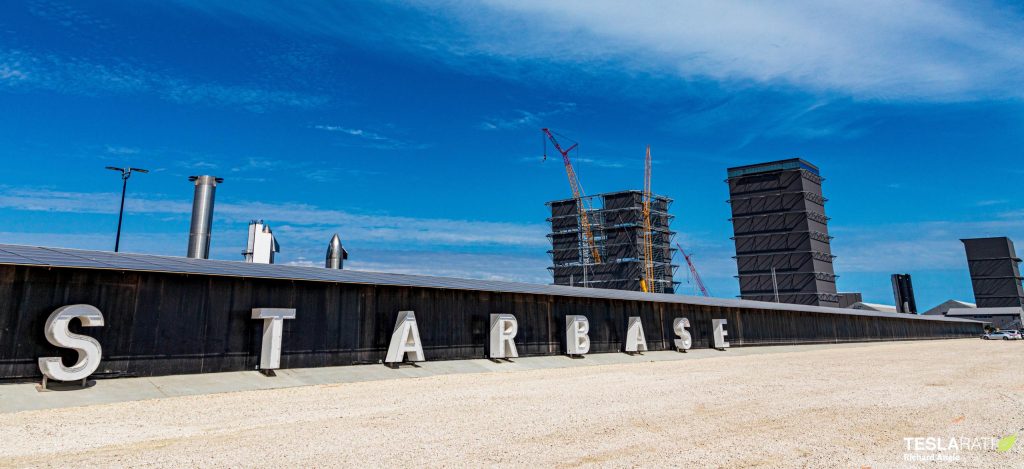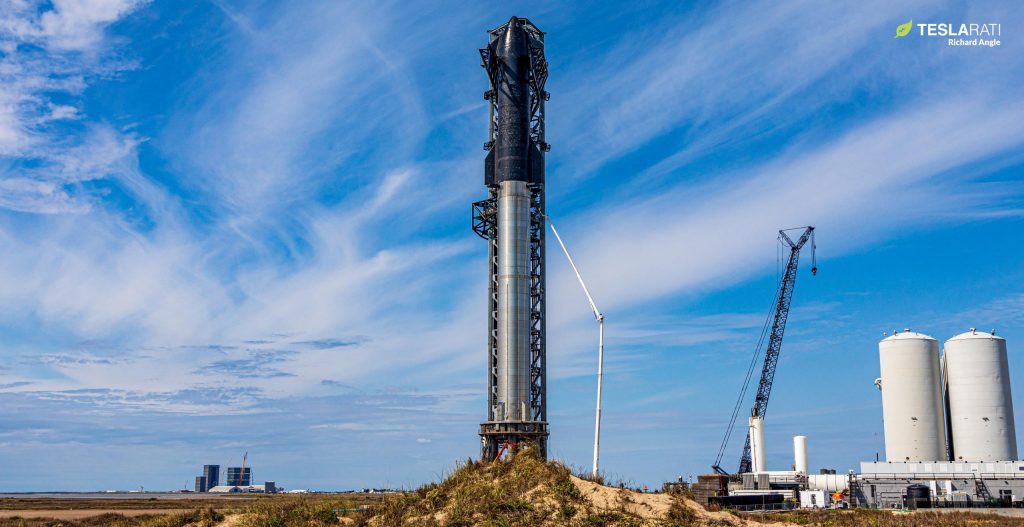

News
SpaceX CEO Elon Musk to present first Starship update since 2019 [webcast]
Barring surprises, SpaceX CEO Elon Musk remains on track to present the first major update on Starship’s development since September 2019 – almost two and a half years ago.
While it’s no longer clear that SpaceX will be able to stack Starship on top of Super Heavy in time for the fully-stacked rocket to serve as an imposing backdrop for the media event, Musk seemingly remains on track to update the world on the status of Starship development as early as 8pm CT (6pm PT, 9pm ET) on Thursday, February 10th (02:00 UTC 11 Feb). Assuming the event is similar to the SpaceX CEO’s first four major Starship presentations, it will be broadcast live to the world on the company’s YouTube channel.
Musk first revealed SpaceX’s detailed plans for a massive, fully-reusable Mars rocket in September 2016. At that point, the rocket – known as the Interplanetary Transport System (ITS) – was to be 12 meters (39 ft) in diameter, 122 meters (400 ft) tall, and made almost entirely out of carbon-fiber composites. In theory, it would have been able to launch up to 300 tons (660,000 lb) to low Earth orbit (LEO) – twice the payload of Saturn V, the next most capable rocket.
In 2017, SpaceX slightly pared back its ambition with a vehicle known as BFR, measuring 9m wide and 106m tall with about a third fewer Raptor engines and estimated performance of ~130 tons (285,000 lb) to LEO. In 2018, on top of announcing Japanese billionaire Yusaku Maezawa’s circumlunar DearMoon mission and BFR’s first real launch contract, SpaceX updated BFR’s design, stretching the booster 12 meters for a total height of 118m (390 ft) and hedging its performance figures with an estimate of 100 tons to LEO in a fully-reusable configuration.
Around the same time as Musk’s 2018 BFR presentation, though, the SpaceX CEO made the decision to entirely scrap the rocket’s composites-heavy design, renaming the rocket ‘Starship’ and replacing the material with stainless steel – effectively reverting structures development to the drawing board. The principles of the rocket, its general shape and layout, and the Raptor engine powering it remained the same. Thanks to steel’s extreme affordability relative to cutting-edge composites, SpaceX was able to make rapid progress and ultimately flew Starhopper – a steel water-tower-esque rocket powered by Raptor – less than a year later in July and August 2019.
Less than a year after Starhopper’s 150m (~500 ft) hop, SpaceX successfully hopped a far more mature Starship prototype known as SN5, which relied on far thinner steel and effectively amounted to a full prototype of the tank section of an orbital-class ship. Just a month later, in September 2020, SpaceX repeated the feat with an entirely different Starship prototype, demonstrating repeatability both in production and flight. Three months later, Starship SN8 – featuring flaps, a nosecone, header tanks, and two more Raptor engines – nearly aced its launch debut. In May 2021, after three more failed test flights, Starship SN15 stuck the landing and survived a 10 km launch, more or less fully demonstrating the rocket’s exotic skydiver-style descent and last-second flip for a vertical landing.
Visible progress has slowed and flight testing has halted since SpaceX began pushing for the first orbital Starship test flight in mid-2021. The company decided against reusing Starship SN15 and also chose not to attempt to replicate the ship’s successful landing with Starship SN16, which was ready for testing a matter of days after. Instead, SpaceX has focused on constructing the orbital launch site and slowly finished Starship S20 and Super Heavy B4 – a pair once expected to support the first orbital test flight. While slow compared to all previous Starship prototypes, Ship 20 has nonetheless made excellent progress and is effectively fully ready for a serious flight test. Booster 4, on the other hand, has barely completed cryogenic proof testing and has yet to perform even a partial wet dress rehearsal (with live propellant) or attempt a single static fire test in last five months.
In short, the status of Starship development – and, especially, Booster 4, Ship 20, and the first orbital test flight – has gotten quite a bit murkier over the last several months. February 9th and 10th marked a welcome change of pace, with SpaceX sailing through the very first attempt at stacking Starship hardware with Starbase’s ‘orbital integration tower’ (launch tower) and a trio of giant, robotic arms. Just a handful of hours after the first ‘arm lift’ began, Starship S20 was safely stacked atop Super Heavy Booster 4, assembling the largest rocket in the world for the second time this year.
With any luck, SpaceX CEO Elon Musk’s first presentation in two and a half years – scheduled no earlier than 8pm CST (02:00 UTC) – will shed further light on the company’s progress towards orbital test flights.



Elon Musk
Elon Musk and Tesla AI Director share insights after empty driver seat Robotaxi rides
The executives’ unoccupied tests hint at the rapid progress of Tesla’s unsupervised Robotaxi efforts.

Tesla CEO Elon Musk and AI Director Ashok Elluswamy celebrated Christmas Eve by sharing personal experiences with Robotaxi vehicles that had no safety monitor or occupant in the driver’s seat. Musk described the system’s “perfect driving” around Austin, while Elluswamy posted video from the back seat, calling it “an amazing experience.”
The executives’ unoccupied tests hint at the rapid progress of Tesla’s unsupervised Robotaxi efforts.
Elon and Ashok’s firsthand Robotaxi insights
Prior to Musk and the Tesla AI Director’s posts, sightings of unmanned Teslas navigating public roads were widely shared on social media. One such vehicle was spotted in Austin, Texas, which Elon Musk acknowleged by stating that “Testing is underway with no occupants in the car.”
Based on his Christmas Eve post, Musk seemed to have tested an unmanned Tesla himself. “A Tesla with no safety monitor in the car and me sitting in the passenger seat took me all around Austin on Sunday with perfect driving,” Musk wrote in his post.
Elluswamy responded with a 2-minute video showing himself in the rear of an unmanned Tesla. The video featured the vehicle’s empty front seats, as well as its smooth handling through real-world traffic. He captioned his video with the words, “It’s an amazing experience!”
Towards Unsupervised operations
During an xAI Hackathon earlier this month, Elon Musk mentioned that Tesla owed be removing Safety Monitors from its Robotaxis in Austin in just three weeks. “Unsupervised is pretty much solved at this point. So there will be Tesla Robotaxis operating in Austin with no one in them. Not even anyone in the passenger seat in about three weeks,” he said. Musk echoed similar estimates at the 2025 Annual Shareholder Meeting and the Q3 2025 earnings call.
Considering the insights that were posted Musk and Elluswamy, it does appear that Tesla is working hard towards operating its Robotaxis with no safety monitors. This is quite impressive considering that the service was launched just earlier this year.
Elon Musk
Starlink passes 9 million active customers just weeks after hitting 8 million
The milestone highlights the accelerating growth of Starlink, which has now been adding over 20,000 new users per day.

SpaceX’s Starlink satellite internet service has continued its rapid global expansion, surpassing 9 million active customers just weeks after crossing the 8 million mark.
The milestone highlights the accelerating growth of Starlink, which has now been adding over 20,000 new users per day.
9 million customers
In a post on X, SpaceX stated that Starlink now serves over 9 million active users across 155 countries, territories, and markets. The company reached 8 million customers in early November, meaning it added roughly 1 million subscribers in under seven weeks, or about 21,275 new users on average per day.
“Starlink is connecting more than 9M active customers with high-speed internet across 155 countries, territories, and many other markets,” Starlink wrote in a post on its official X account. SpaceX President Gwynne Shotwell also celebrated the milestone on X. “A huge thank you to all of our customers and congrats to the Starlink team for such an incredible product,” she wrote.
That growth rate reflects both rising demand for broadband in underserved regions and Starlink’s expanding satellite constellation, which now includes more than 9,000 low-Earth-orbit satellites designed to deliver high-speed, low-latency internet worldwide.
Starlink’s momentum
Starlink’s momentum has been building up. SpaceX reported 4.6 million Starlink customers in December 2024, followed by 7 million by August 2025, and 8 million customers in November. Independent data also suggests Starlink usage is rising sharply, with Cloudflare reporting that global web traffic from Starlink users more than doubled in 2025, as noted in an Insider report.
Starlink’s momentum is increasingly tied to SpaceX’s broader financial outlook. Elon Musk has said the satellite network is “by far” the company’s largest revenue driver, and reports suggest SpaceX may be positioning itself for an initial public offering as soon as next year, with valuations estimated as high as $1.5 trillion. Musk has also suggested in the past that Starlink could have its own IPO in the future.
News
NVIDIA Director of Robotics: Tesla FSD v14 is the first AI to pass the “Physical Turing Test”
After testing FSD v14, Fan stated that his experience with FSD felt magical at first, but it soon started to feel like a routine.

NVIDIA Director of Robotics Jim Fan has praised Tesla’s Full Self-Driving (Supervised) v14 as the first AI to pass what he described as a “Physical Turing Test.”
After testing FSD v14, Fan stated that his experience with FSD felt magical at first, but it soon started to feel like a routine. And just like smartphones today, removing it now would “actively hurt.”
Jim Fan’s hands-on FSD v14 impressions
Fan, a leading researcher in embodied AI who is currently solving Physical AI at NVIDIA and spearheading the company’s Project GR00T initiative, noted that he actually was late to the Tesla game. He was, however, one of the first to try out FSD v14.
“I was very late to own a Tesla but among the earliest to try out FSD v14. It’s perhaps the first time I experience an AI that passes the Physical Turing Test: after a long day at work, you press a button, lay back, and couldn’t tell if a neural net or a human drove you home,” Fan wrote in a post on X.
Fan added: “Despite knowing exactly how robot learning works, I still find it magical watching the steering wheel turn by itself. First it feels surreal, next it becomes routine. Then, like the smartphone, taking it away actively hurts. This is how humanity gets rewired and glued to god-like technologies.”
The Physical Turing Test
The original Turing Test was conceived by Alan Turing in 1950, and it was aimed at determining if a machine could exhibit behavior that is equivalent to or indistinguishable from a human. By focusing on text-based conversations, the original Turing Test set a high bar for natural language processing and machine learning.
This test has been passed by today’s large language models. However, the capability to converse in a humanlike manner is a completely different challenge from performing real-world problem-solving or physical interactions. Thus, Fan introduced the Physical Turing Test, which challenges AI systems to demonstrate intelligence through physical actions.
Based on Fan’s comments, Tesla has demonstrated these intelligent physical actions with FSD v14. Elon Musk agreed with the NVIDIA executive, stating in a post on X that with FSD v14, “you can sense the sentience maturing.” Musk also praised Tesla AI, calling it the best “real-world AI” today.








